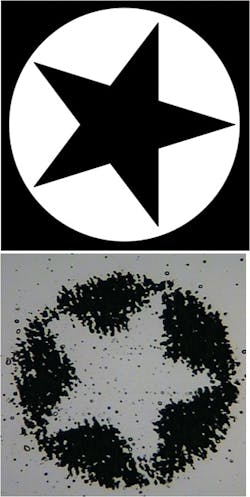Liquid-crystal-based SLMs have high resolution and can produce complex and arbitrary beam shapes. They do, however, have a lower power threshold (typically tolerating a few watts per square centimeter) and slower modulation capabilities—tens of hertz versus kilohertz—than deformable mirrors. Heriot-Watt University (Edinburgh, Scotland) researchers have demonstrated increased power handling of such a device and have applied it to laser-marking applications using a 14.7 W nanosecond laser. Using a 19.5 × 14.6 mm Holoeye (Berlin-Adlershof, Germany) reflective SLM with 1024 × 768 pixels at 75 Hz, complex shapes can be marked on stainless-steel and other surfaces. Image quality was improved by modifying the phase profile during the marking process.
Contact Jonathan Parry at[email protected].
More Laser Focus World Current Issue Articles
More Laser Focus World Archives Issue Articles
